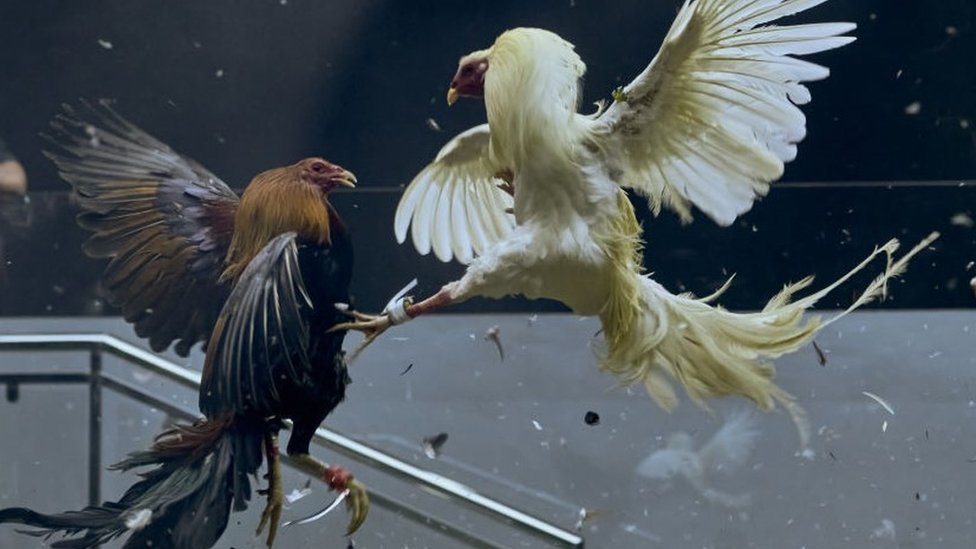C4 Cockfighting Today
Cockfighting, often labeled as a controversial sport, has deep roots in various cultures around the world. Among the myriad of cockfighting events, C4 cockfighting – Đá gà trực tiếp C4 has emerged as a prominent and well-followed variation. This article delves into the intricacies of C4 cockfighting today, exploring its foundation, rules, appeal, cultural significance, and the ethical debates surrounding it.
 Read more – đá gà c4 hôm nay
Read more – đá gà c4 hôm nay
Understanding C4 Cockfighting

C4 cockfighting, an evolution of traditional forms of the sport, is distinguished by its unique set of rules and gameplay dynamics. In many regions, this variation has garnered significant attention and popularity.
Historical Context
Cockfighting can be traced back thousands of years, with evidence suggesting it was practiced in ancient civilizations such as Greece, Rome, India, and China. The origins of C4 cockfighting stem from these historical practices but have adapted over time to reflect modern societal changes.
In recent decades, C4 cockfighting has carved out a niche, particularly in areas where there is a robust tradition of bird fighting. This version emphasizes structured formats and clearly defined rules, which add a layer of legitimacy and organization to an otherwise chaotic event.
The Rules of C4 Cockfighting
Understanding the rules of C4 cockfighting is crucial for anyone interested in participating or spectating. Unlike traditional cockfighting, which may allow for more free-form interactions, C4 places an emphasis on structure.
Combatants must follow specific protocols regarding the preparation of the birds, including their training, feeding, and health checks prior to matches. Each bout typically consists of stipulated rounds, allowing for breaks between fights. These intervals give birds a chance to recuperate and offer spectators moments of anticipation and excitement.
Another defining feature is the use of specialized equipment. From spurs to protective gear designed to minimize harm to the animals, safety has become a priority in the evolution of C4 cockfighting.
The Popularity Surge
In recent years, C4 cockfighting has gained momentum among communities both locally and internationally. Social media platforms have played a significant role in this surge, allowing enthusiasts to share experiences and highlight events.
Local communities have embraced C4 not only as a competitive sport but also as a social gathering. Events attract diverse crowds, including families, friends, and seasoned bettors. The atmosphere at a C4 cockfighting event is often described as electrifying, with participants cheering passionately for their chosen birds.
Moreover, legal frameworks in some regions have evolved to accommodate organized cockfighting events, further legitimizing C4 as a recognized form of entertainment.
Cultural Significance of C4 Cockfighting

C4 cockfighting holds immense cultural relevance in various countries, serving as both a source of pride and contention. Its practice reflects broader social attitudes towards animal sports and collective traditions.
Tradition and Community
For many, C4 cockfighting is more than just a sport; it represents a long-standing tradition that fosters community ties. Families often raise birds together, passing down knowledge and expertise through generations.
In many regions, local festivals featuring C4 cockfighting are a major highlight of the year. These events bring together people from various backgrounds, creating an atmosphere of camaraderie and celebration. The sport functions as a conduit for storytelling, where each bird has its own narrative – from its lineage to the battles it has fought.
Economic Impact
The economic implications of C4 cockfighting extend beyond mere betting incomes. Local economies benefit significantly from these events, with businesses such as feed suppliers, veterinary services, and even transportation services seeing increased demand during the season.
Betting on fights contributes to the financial landscape as well, providing income opportunities for local entrepreneurs. However, while the sport may generate considerable revenue, it raises ethical questions regarding its impact on animal welfare.
Global Perspectives
C4 cockfighting’s appeal isn’t limited to specific geographical locations. Globally, it has sparked interest among enthusiasts who appreciate the sport’s historical roots and cultural significance.
Countries like the Philippines, Mexico, and several Caribbean nations embrace C4 cockfighting as part of their heritage. International tournaments have sprung up, showcasing birds from different regions, thus introducing a competitive yet respectful environment for aficionados worldwide.
However, the global enthusiasm for C4 cockfighting often clashes with animal rights advocates who campaign against the practice, emphasizing the need for humane treatment of animals. This ongoing debate shapes public perceptions of the sport and influences regulatory responses.
Ethical Debates Surrounding C4 Cockfighting

The rise in popularity of C4 cockfighting has ignited significant ethical discussions, particularly concerning animal welfare. While supporters argue for the right to practice their traditions, opponents raise concerns about the treatment of the birds involved.
Animal Welfare Concerns
One of the primary criticisms of C4 cockfighting revolves around the potential harm and suffering inflicted on the animals. Despite regulations aimed at ensuring the birds are healthy and trained properly, injuries during fights remain a reality.
Animal rights groups argue that the inherent nature of cockfighting leads to unnecessary suffering. They advocate for stricter laws prohibiting such activities, highlighting the moral implications of using animals for entertainment purposes.
Furthermore, critics suggest that even regulated environments cannot fully mitigate the risks faced by the birds. The argument posits that no matter how much effort is placed into ensuring the wellbeing of the animals, the fundamental nature of the sport compromises their welfare.
Arguments in Favor of C4 Cockfighting
Conversely, proponents of C4 cockfighting defend the practice vehemently. Their arguments often center around tradition, culture, and the responsible management of animal populations. Supporters assert that when done responsibly, C4 can offer a level of care and respect for the birds that other industries may lack.
Advocates point out that knowledgeable breeders invest substantial time and resources into raising healthy birds, promoting optimal living conditions. They emphasize the importance of education and responsible ownership in mitigating risks rather than advocating for a blanket ban on the practice.
Additionally, within certain communities, C4 cockfighting serves as a bonding experience. Many see it as an art form, with skilled handlers exhibiting profound connections with their birds. This emotional bond adds a layer of complexity to the ethical discussion.
Regulatory Frameworks
As conversations surrounding C4 cockfighting evolve, so too do the regulatory frameworks governing it. Some regions have implemented measures designed to balance traditional practices with animal welfare concerns, promoting responsible breeding and fighting standards.
These regulations aim to provide oversight while respecting cultural traditions. Successful implementation requires collaboration between advocates for animal rights and supporters of C4 cockfighting, creating a dialogue around best practices and ethical standards.
Efforts to educate participants about proper care and management of fighting birds have gained traction, reflecting a growing recognition of shared responsibilities. Ultimately, finding common ground is essential for the future of C4 cockfighting.
FAQs
What distinguishes C4 cockfighting from traditional cockfighting?
C4 cockfighting incorporates specific rules and structured match formats that enhance organization and viewer engagement. Additionally, it prioritizes the health and safety of the birds, utilizing protective equipment and enforced rest periods between bouts.
Is C4 cockfighting legal?
The legality of C4 cockfighting varies by region. In some countries, it is considered a legitimate sport, whereas in others, it faces strict prohibitions due to animal welfare concerns. Checking local laws is essential for those interested in participating or observing.
How are the birds prepared for C4 cockfighting?
Preparation involves thorough training regimens, proper nutrition, and regular health assessments. Owners typically take great care to ensure their birds are fit for competition, reflecting a deep commitment to their well-being.
Are there any safety measures in place during C4 cockfighting events?
Yes, safety measures include the use of protective gear for the birds, as well as medical personnel on standby to address any injuries sustained during matches. Regulations may also dictate rest periods between bouts to allow for recovery.
What is the future of C4 cockfighting amid increasing scrutiny?
The future of C4 cockfighting will likely depend on ongoing dialogues about animal welfare and the establishment of ethical standards. Adaptations to regulations and increased education among participants can help ensure the sport evolves sustainably.
Conclusion
C4 cockfighting stands at a crossroads, balancing rich traditions with contemporary ethical considerations. Its significance runs deep within communities worldwide, fostering both connection and controversy. As the sport continues to evolve, dialogue surrounding its practices and impact on animal welfare will remain vital. Ensuring a responsible framework for C4 cockfighting may hold the key to preserving its legacy while addressing the complexities of modern societal values.






